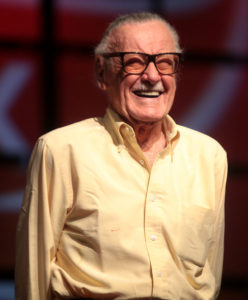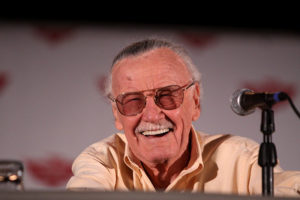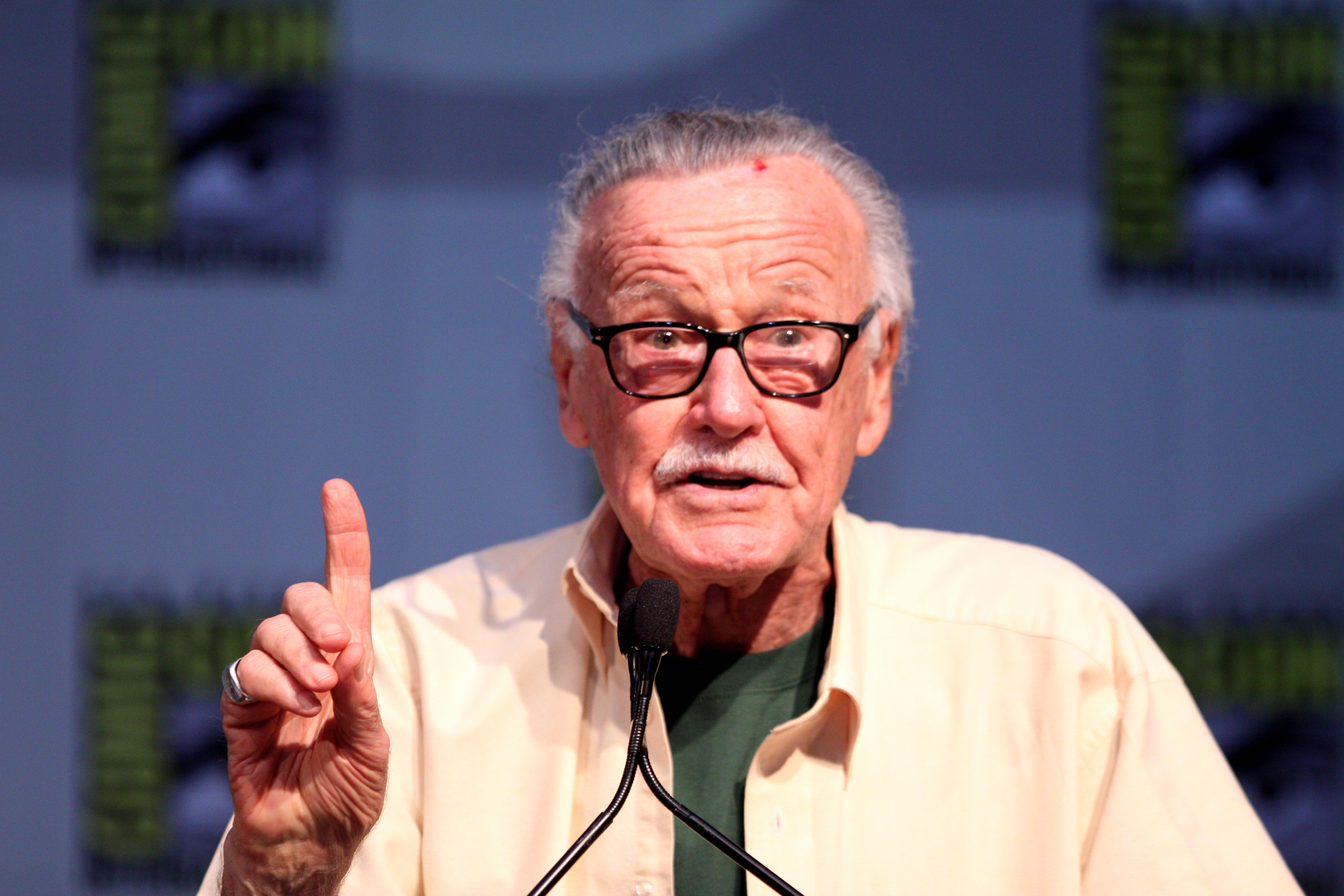I usually try not to put celebrities on some deity like pedestal above me, but Stan Lee is up there. The architect of the modern superhero, Lee is responsible for creating an empire of memorable characters that captured my imagination at an early age.
He’s a guy with so much charm and charisma to go with his business acumen, that it’s a difficult task to see him as just a normal human being sometimes.
He is a major reason why Marvel and superheroes at large have become so popular. Lee was a promotional genius by making himself the face of the brand, using his likeness and answering fan mail with a razor sharp sense of humor.
And the best part were the cameos of course! Artists would draw him in their comics and later Lee would take notice and it became a tradition; Lee would have a cameo in any Marvel project if they asked. Nothing was off limits, as he has cameoed in TV shows, video games and films.
These cameos endeared him and earned him a spot in the hearts of Marvel fans young and old. The feelings of joy and entertainment one would feel when reading a good comic or watching a Marvel movie would be attached to the man with the sunglasses and mustache.
One of my earliest memories of Lee was playing the “Spider-Man” game released back in 2000 for the original PlayStation (even at a super young age, Spidey was always my favorite).
Lee was the narrator for that game and added his comments to the gallery of characters you encounter and costumes you unlock in the game. He added plenty of background information on these things. I loved the gravelly, bombastic voice that told me what the hell a Spider-Man 2099 was.
I didn’t read a bunch of comics back then, so I couldn’t speak about much of his impact in that medium. I just knew him as the curator of all things Marvel related.
Later I would read biographies and learn more about Lee, and in doing some research for this piece there’s one thing I can say: Lee lived an incredible life.
Born Stanley Martin Lieber, he grew up with a skill and passion for writing and had aspirations of creating the “Great American Novel.” He worked as a gopher of sorts at Timely Comics, which would later become Marvel. Later, he would be given opportunities to work on superhero comics.

Comics were pretty low on the social status chain at the time and Lee actually created the pen-name Stan Lee as a way to disassociate from the comic business (He would later legally change his name to this).
Shortly after the attack on Pearl Harbor, Lee joined the U.S. Army in 1942. He served as a member of the Signal Corps, repairing telegraph poles and other communications equipment.
The Army then recognized his skill at writing and moved him to the Training Film Division, where he wrote manuals, training films, slogans and did some cartoon work. He is one of nine men in the Army to earn the title of “playwright.”
He returned from the service in 1945 and worked for Marvel until the end of the 50s. At that point, he became disenchanted with comics and was looking to change careers.
However, due to the success of DC Comics’ original superhero team up, the Justice League of America, he was given an opportunity to create his own super team. Lee’s wife, Joan, convinced him to give it one last try and write a story he’d be proud of.
This led to Lee and Kirby co-creating the Fantastic Four. It was an instant success, and the Lee-Kirby duo created more characters, like the X-Men, the Hulk, Thor and Iron-Man.
Marvel’s heroes were a revolution, turning traditional superhero tropes on their heads. Superheroes of the time were squeaky clean and had no weaknesses or personal flaws to speak of.
Lee’s heroes were instead flawed human beings that saw powers as more of a burden than a gift. Many had egos and worried about real life problems such as struggling to pay bills, having mental or physical breakdowns and dealing with spousal issues.
Lee’s greatest creation came in 1962, when he and Steve Ditko introduced the character of Spider-Man to the world in “Amazing Fantasy #15.” The character was an immediate hit, and saved that series from cancellation.
Spider-Man was unlike most superheroes of the time. Crime fighters that were of high school age were mostly used as sidekicks i.e. Robin to Batman. Yet Spidey had to learn the lesson of power and responsibility on his own, which made him unique.
Throughout the 60s Spider-Man became the best selling title of the company, and Lee integrated social issues into the comics, such as drug use, (which was forbidden at the time) the Vietnam War, elections and student activism.

Another innovation Lee made was the way Marvel interacted with their fans. He made himself known as the head of the company and kept the fans updated on upcoming storylines and news about Marvel staff members in the “Bullpen Bulletin” page. He also wrote opinion columns called “Stan’s Soapbox.”
Lee wrote in a very chatty, personal style that endeared himself to readers. His goal was to make readers see the creators of Marvel comics as friends. This is an attitude that stayed consistent throughout his life.
Lee continued to script, art-direct and edit the majority of Marvel’s titles until 1972, where he took on the role of publisher. He left Marvel in the 90s, though he served as Chairman Emeritus for a number of years, earning a $1 million annual salary.
He dabbled in many other projects throughout the 2000s and served as the ultimate brand ambassador for Marvel.
So in closing true believers, Stan Lee’s legacy will be that of a creative maverick that changed the superhero genre and made comic books a huge part of the mainstream culture.
The plethora of characters he created have been immortalized through the page and the silver screen and have touched the hearts and minds of countless people.
He stands as a humble figure that truly loved what he did and appreciated his fans. His work and characters will touch the hearts and minds of millions of people for generations to come.
He inspires me to continue to move upward and onward to greater glory in everything I do. In a word; Excelsior!
 Henry Wolski
Henry Wolski
Executive Editor

